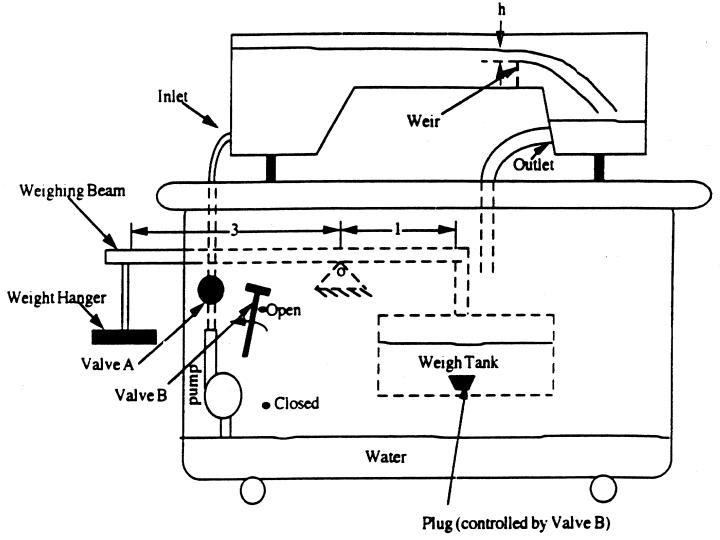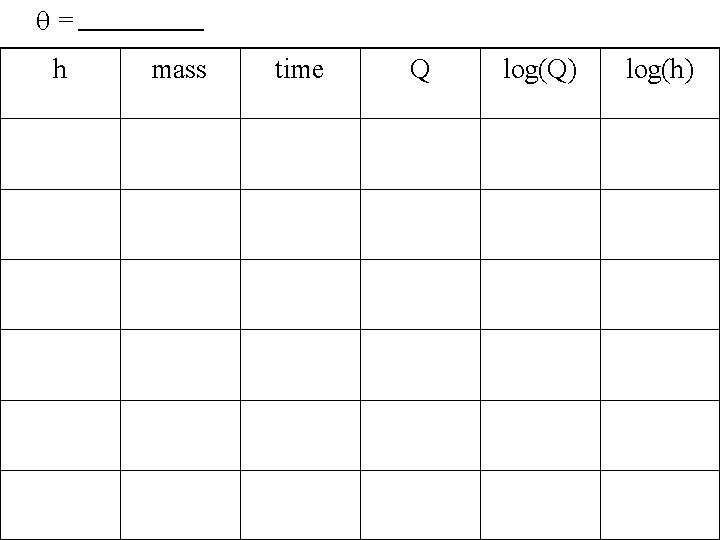
Figure 4.1.
Object
To determine the relationship between the depth of water flowing over the weir and the discharge through the weir.
Apparatus
The following apparatus is required for this experiment:

Figure 4.1.
Theory
The generally accepted formula for flow over a V-notch weir is:
Q = rate of discharge,
C d = coefficient of discharge,
ß = angle of the vee notch ( in this case 30 ° ),
g = acceleration due to gravity, and
h = head or height of water flowing through the vee notch.
Experimental Procedure
The procedure outlined below is to be followed for this experiment:
Note: Depth of water upstream of the weir is measured by a hook gauge incorporated in the apparatus. Once water is flowing over the weir, it takes a long time for this depth to return to zero. Therefore, be sure to zero the hook gauge before you start the apparatus and be careful not to lose this zero point during your work. This procedure will save you considerable time.
Report
Compute the coefficient of discharge, Cd for the weir. Discuss your results.
Hint: Plot Q versus h on log-log paper. Compare the slope of the line with 2.5 and C d can be determined from the intercept of this line.
Table 4.1.
